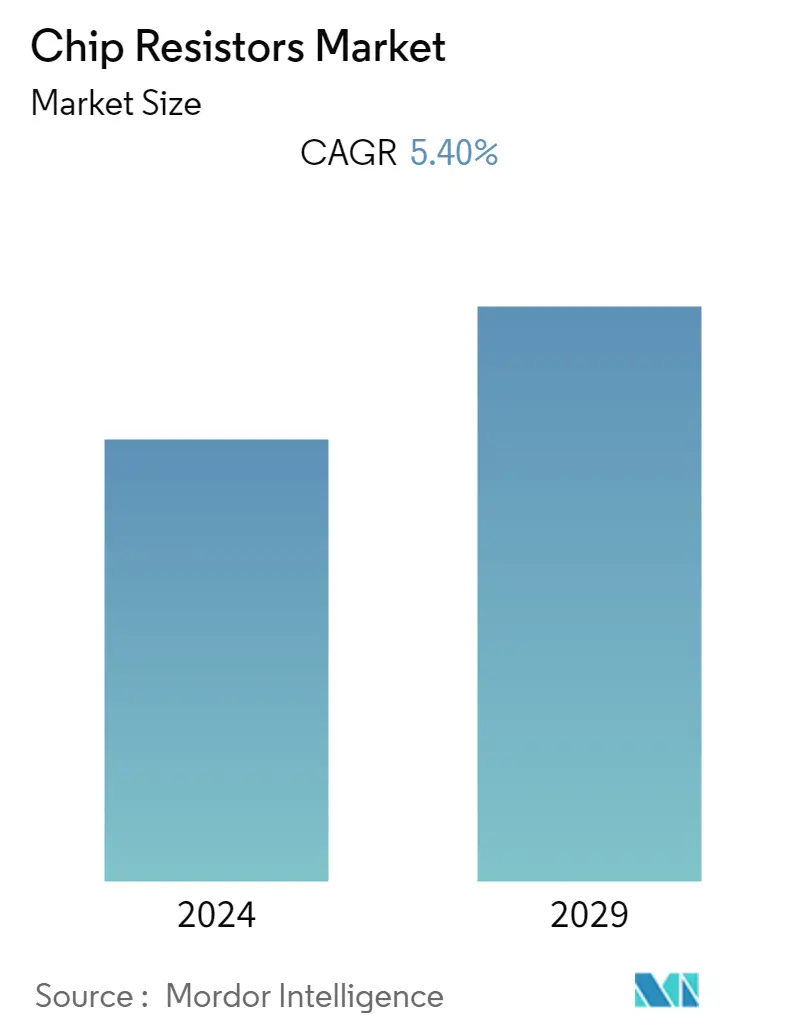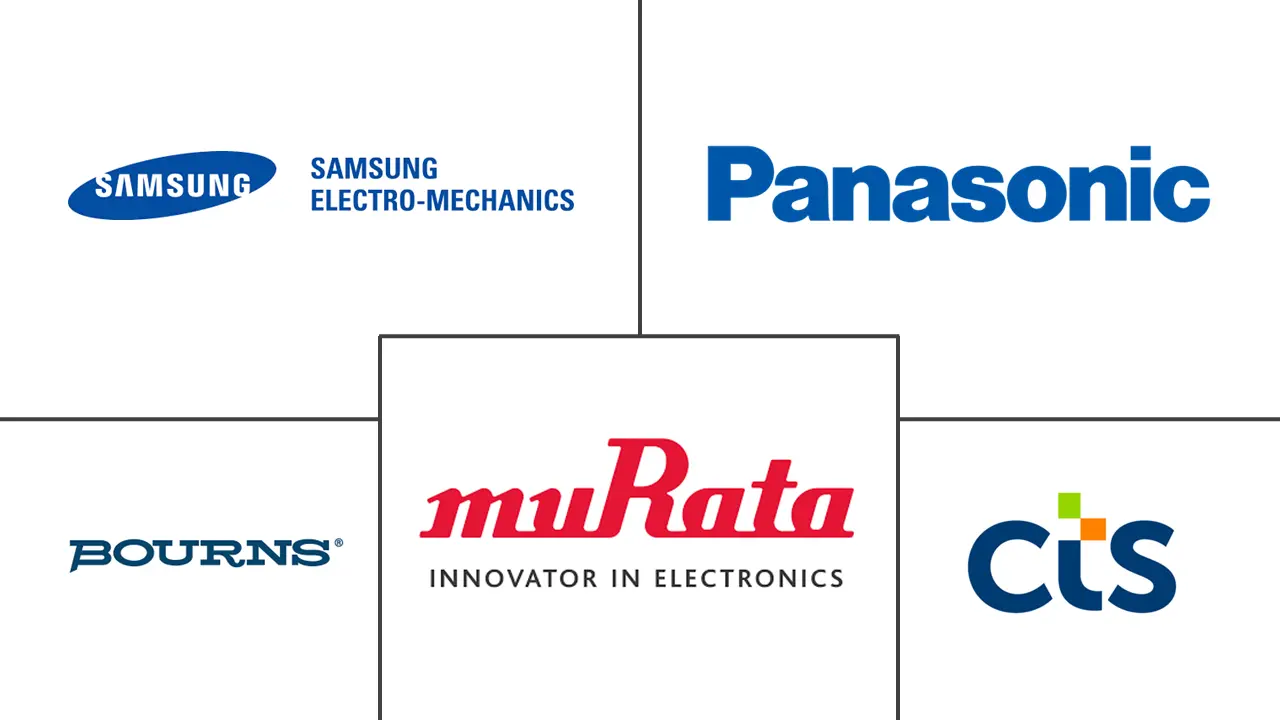Market Size of Chip Resistors Industry

| Study Period | 2019 - 2029 |
| Base Year For Estimation | 2023 |
| CAGR | 5.40 % |
| Fastest Growing Market | Asia Pacific |
| Largest Market | Asia Pacific |
| Market Concentration | Medium |
Major Players
*Disclaimer: Major Players sorted in no particular order |
Need a report that reflects how COVID-19 has impacted this market and its growth?
Chip Resistors Market Analysis
The chip resistors market was valued at USD 1.1 billion during the current year and is anticipated to reach around USD 1.6 billion by the end of the forecast period, registering a CAGR of approximately 5.4% during the forecast period. The large-scale digitization across various sectors and the proliferation of applications like the Internet of Things, AI, and cloud computing are anticipated to offer a significant boost to the growth of the studied market.
- Several chip resistor types are available to address the design and application requirements, such as general-purpose chip resistors, high precision chip resistors, current sense chip resistors, high voltage chip resistors, high power chip resistors, and high resistance chip resistors.
- General-purpose chip resistors are utilized in surface-mount circuit designs wherever a standard or general resistor for voltage reduction (voltage dividers), current control (current limiters), or similar requirements is needed. These are typically thick-film resistors. In the present market scenario, thick film resistors gain significant traction due to their increasing application in test and measurement equipment, monitoring equipment, medical equipment, audio, precision controls, and instrumentation.
- High-voltage circuits are standard for lighting, HV instrumentation, HV industrial, or other HV applications where high-voltage chip resistors are needed. High-power resistors may be used in general-purpose resistors where high power density is required, as they offer higher power ratings than general-purpose chip resistor analogs. High-resistance chip resistors are typically used in high-impedance instruments, test equipment circuits, temperature measurement circuits, voltage dividers, circuits for gain setting, etc.
- Electric car sales are expanding at a rapid pace each year, assisting the automobile industry in combating climate change and other environmental issues. According to the International Energy Agency, sales of EVs significantly increased in 2022, accounting for 1.02 million electric vehicles. Such instances indicate the growing demand for MLCC in the automotive sector. Further, the high adoption of EVs and the complete phase-out dates of ICE engines set by various governments will drive the growth of MLCC in the automotive sector. Manufacturers of electric cars install chip resistors to increase the energy efficiency and robustness of the electronic systems used in these vehicles. These advancements in the automobile industry will fuel market trends.
- On the flip side, unprecedented increases in the cost of ruthenium, a critical element in the production of thick film paste incorporated in thick film chip resistors, have resulted in delayed lead times. Moreover, due to the large percentage of variable costs in the production of chip resistors relying on raw materials, price surges and short supply are anticipated for the rest of FY 2022. In addition, the trade disputes in South Africa regarding platinum mines are directly impacting the fluctuations in these prices. Ruthenium has experienced a significant price increase in the last few years, from USD 40 per troy ounce to as high as USD 850 per troy ounce, corresponding with shortages of thick film chip resistors. However, this price increase has resulted in customers seeking alternative resistor designs, including those based on thin-film nickel.
- The COVID-19 pandemic had a significant impact on the chip resistor market. With the disruption of supply chains and a decline in the growth of key industries such as industrial electronic equipment and automobiles, the growth of the market was impeded. Additionally, the pandemic caused uncertainty in the stock market, further affecting the chip resistor market. However, there are some potential positive impacts, such as the increasing use of chip resistors in consumer electronics and the growth of the 5G market. Overall, the COVID-19 pandemic had a mixed impact on the chip resistor market.
